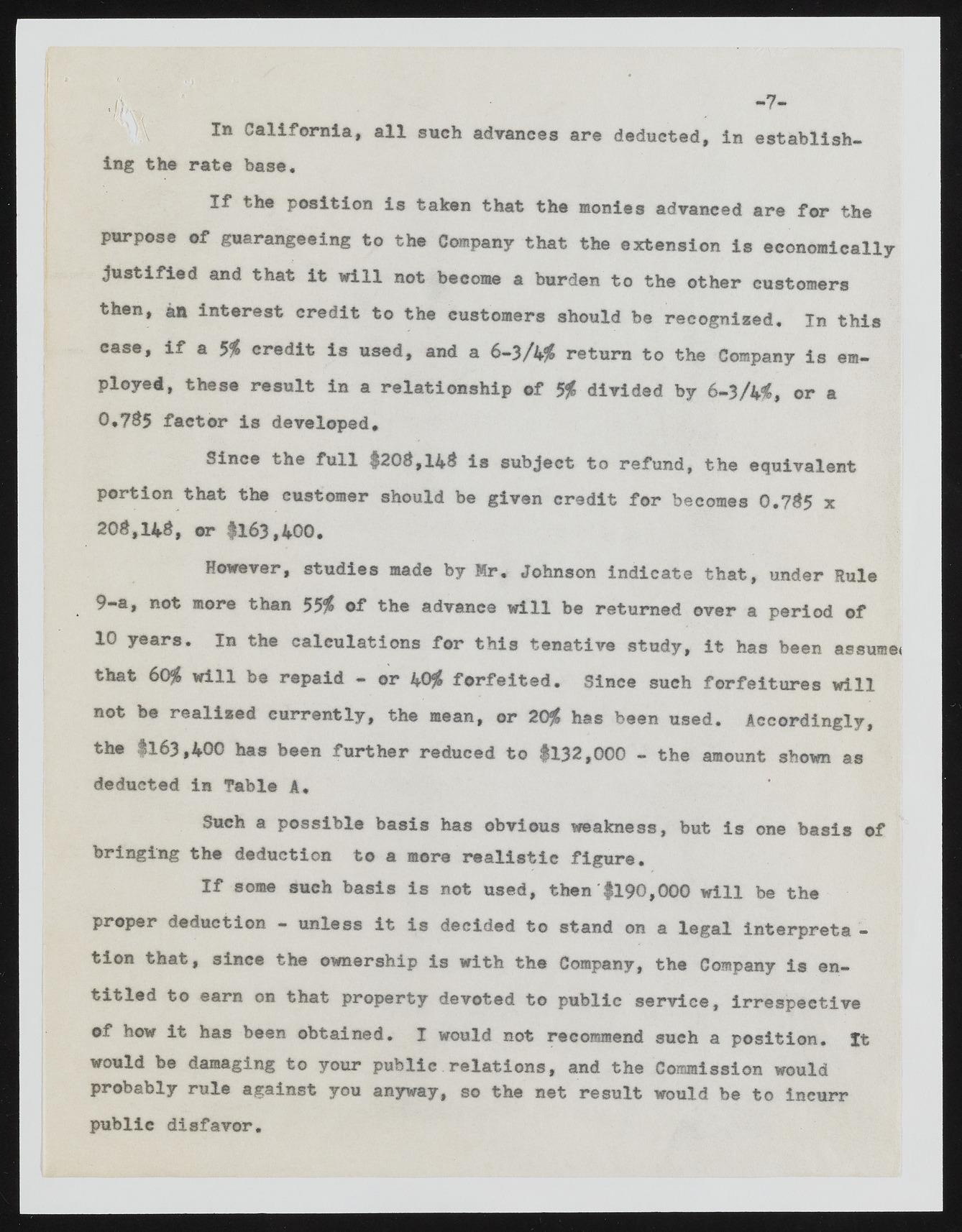Copyright & Fair-use Agreement
UNLV Special Collections provides copies of materials to facilitate private study, scholarship, or research. Material not in the public domain may be used according to fair use of copyrighted materials as defined by copyright law. Please cite us.
Please note that UNLV may not own the copyright to these materials and cannot provide permission to publish or distribute materials when UNLV is not the copyright holder. The user is solely responsible for determining the copyright status of materials and obtaining permission to use material from the copyright holder and for determining whether any permissions relating to any other rights are necessary for the intended use, and for obtaining all required permissions beyond that allowed by fair use.
Read more about our reproduction and use policy.
I agree.Information
Digital ID
Permalink
Details
More Info
Rights
Digital Provenance
Publisher
Transcription
In California, all such advances are deducted, in establishing the rate base. If the position is taken that the monies advanced are for the purpose of guarangeeing to the Company that the extension is economically justified and that it will not become a burden to the other customers then, an interest credit to the customers should be recognized. In this case, if a 5% credit is used, and a 6-3/4t return to the Company is employed, these result in a relationship of 5% divided by 6-3/ k i t or a 0*7&5 factor is developed* Since the full $20$,14$ is subject to refund, the equivalent portion that the customer should be given credit for becomes Q.7$5 x 20$,14$, or $163,400, However, studies made by Mr, Johnson indicate that, under B u ie 9-a, not more than 55% ©f the advance will be returned over a period of 10 years. In the calculations for this tenative study, it has been assume* that 60% will be repaid - or k0% forfeited. Since such forfeitures will not be realized currently, the mean, or 20% has been used. Accordingly, the $163,400 has been further reduced to $132,000 - the amount shown as deducted in Table A* Such a possible basis has obvious weakness, but is one basis of bringing the deduction to a more realistic figure. If some such basis is not used, then $190,000 will be the proper deduction - unless it is decided to stand on a legal Interpreta - tien that, since the ownership is with the Company, the Company is entitled to earn on that property devoted to public service, irrespective of how it has been obtained, I would not recommend such a position. It would be damaging to your public relations, and the Commission would probably rule against you anyway, so the net result would be to incurr public disfavor.

